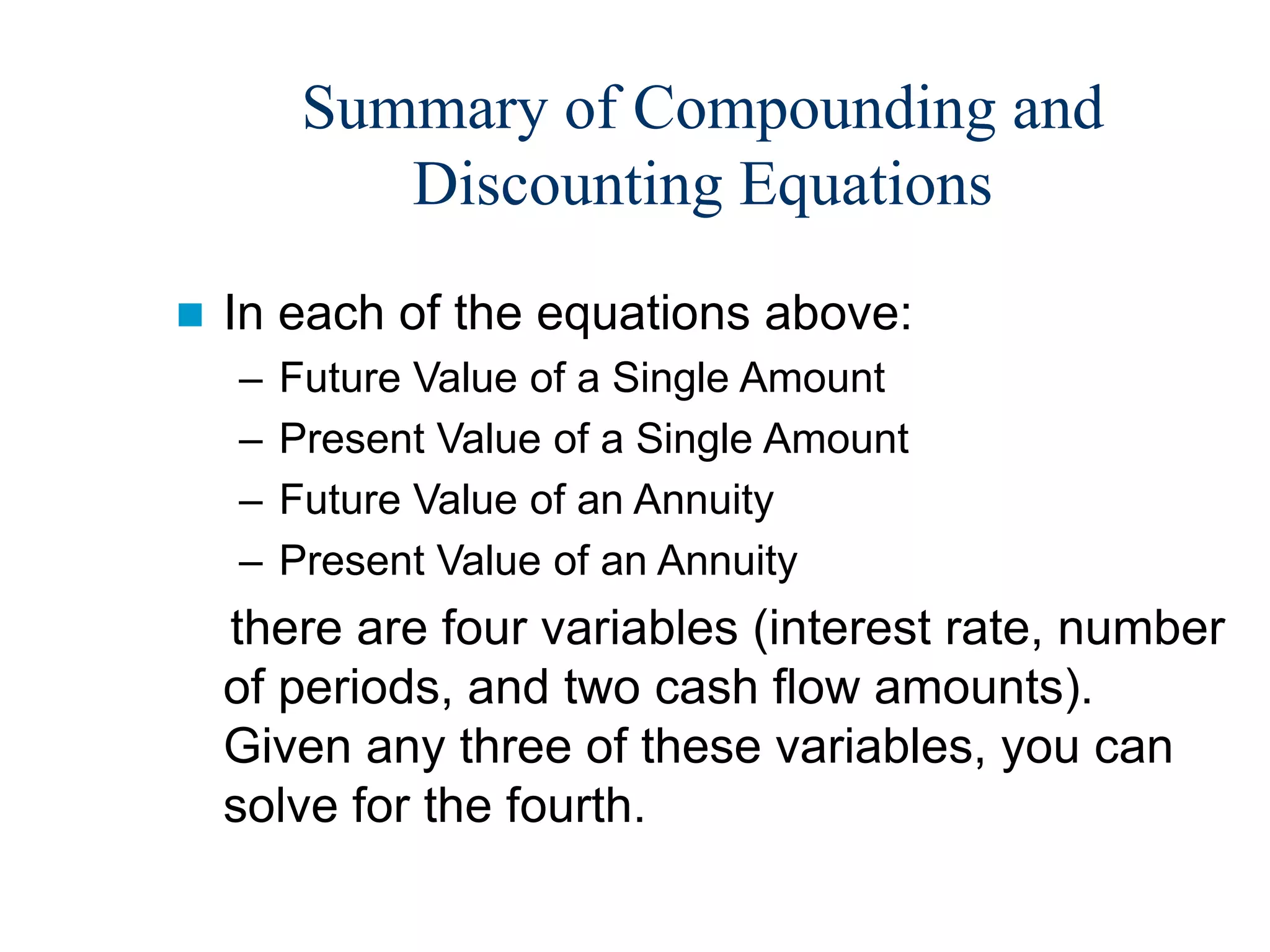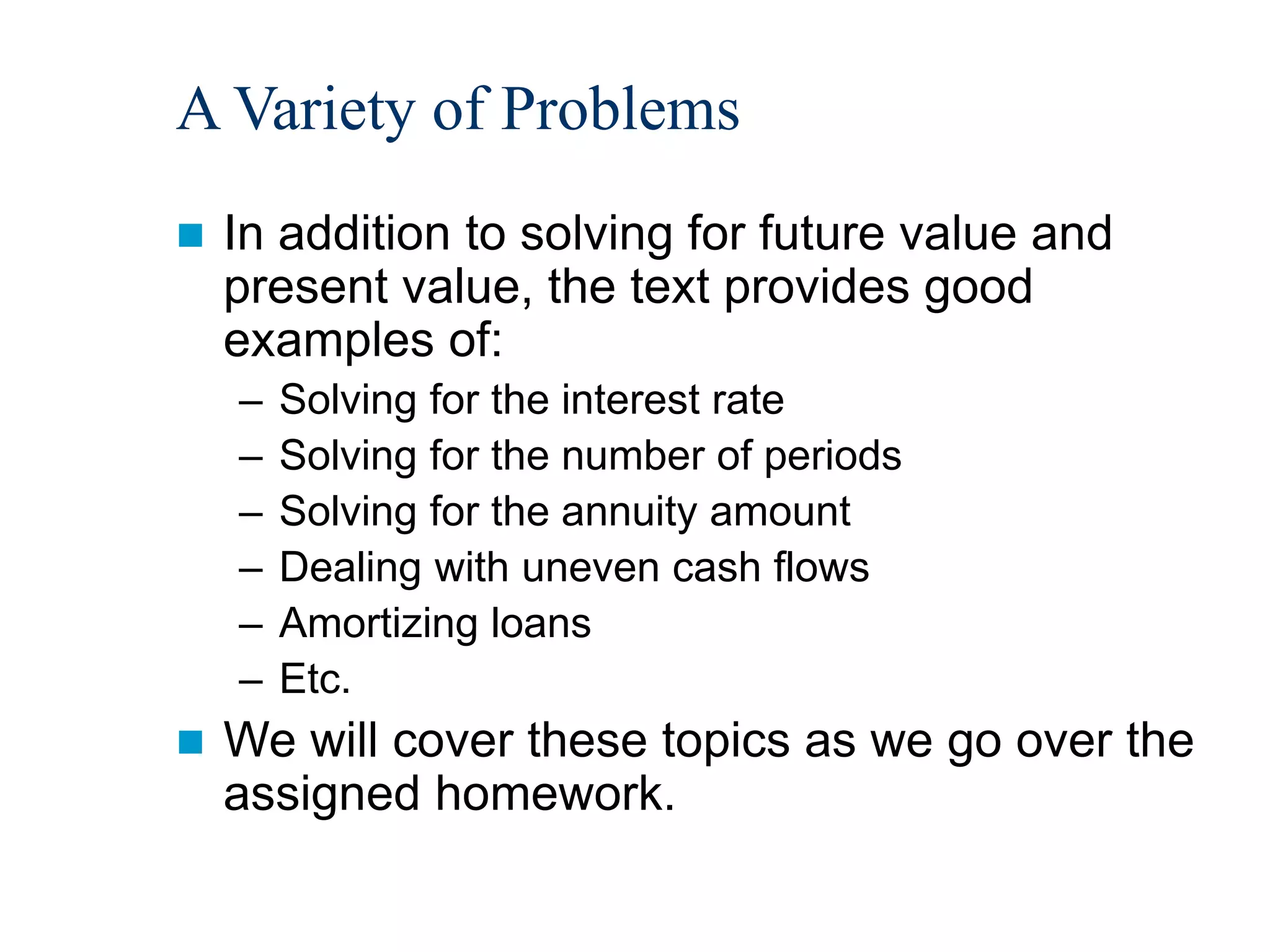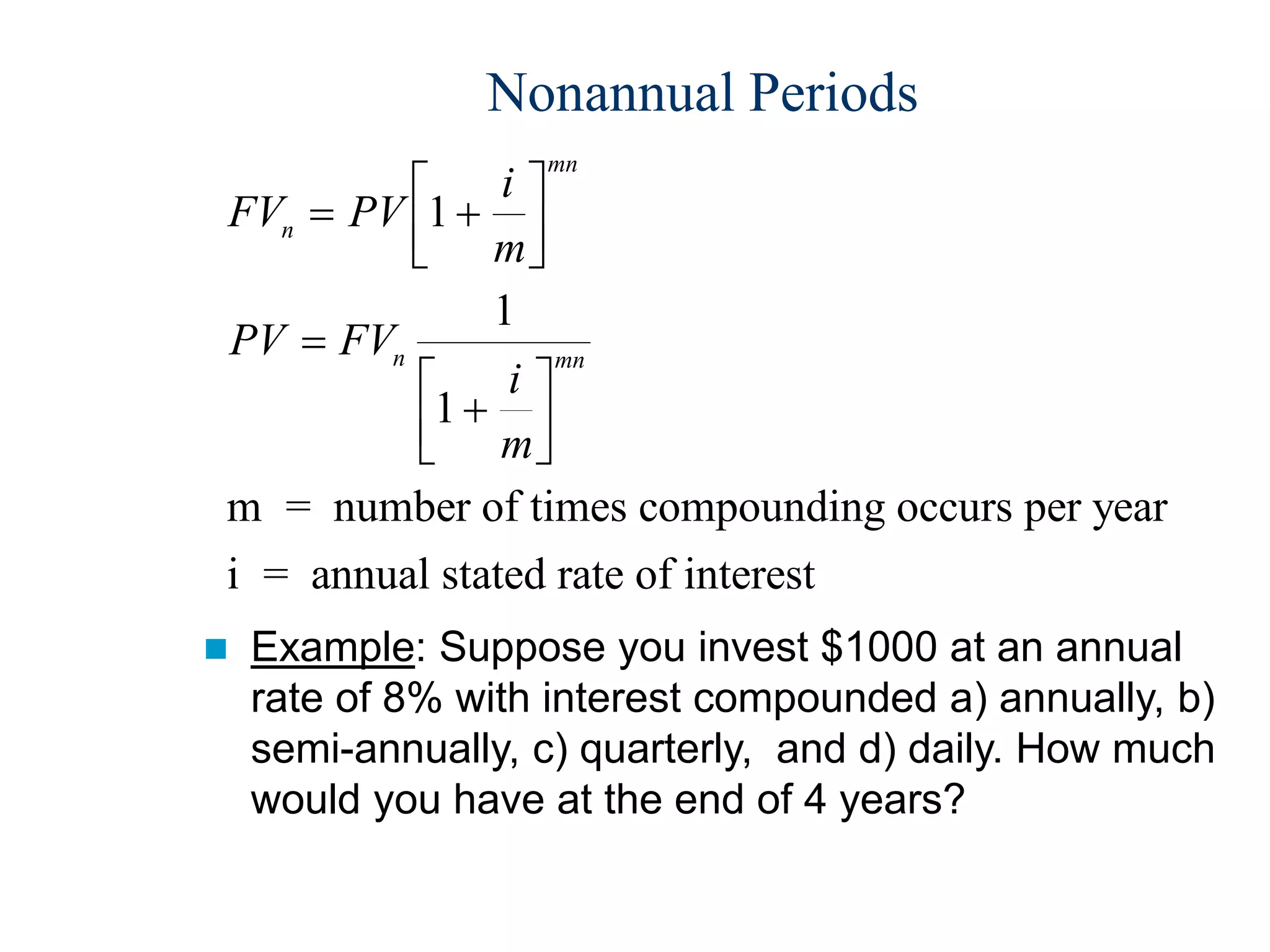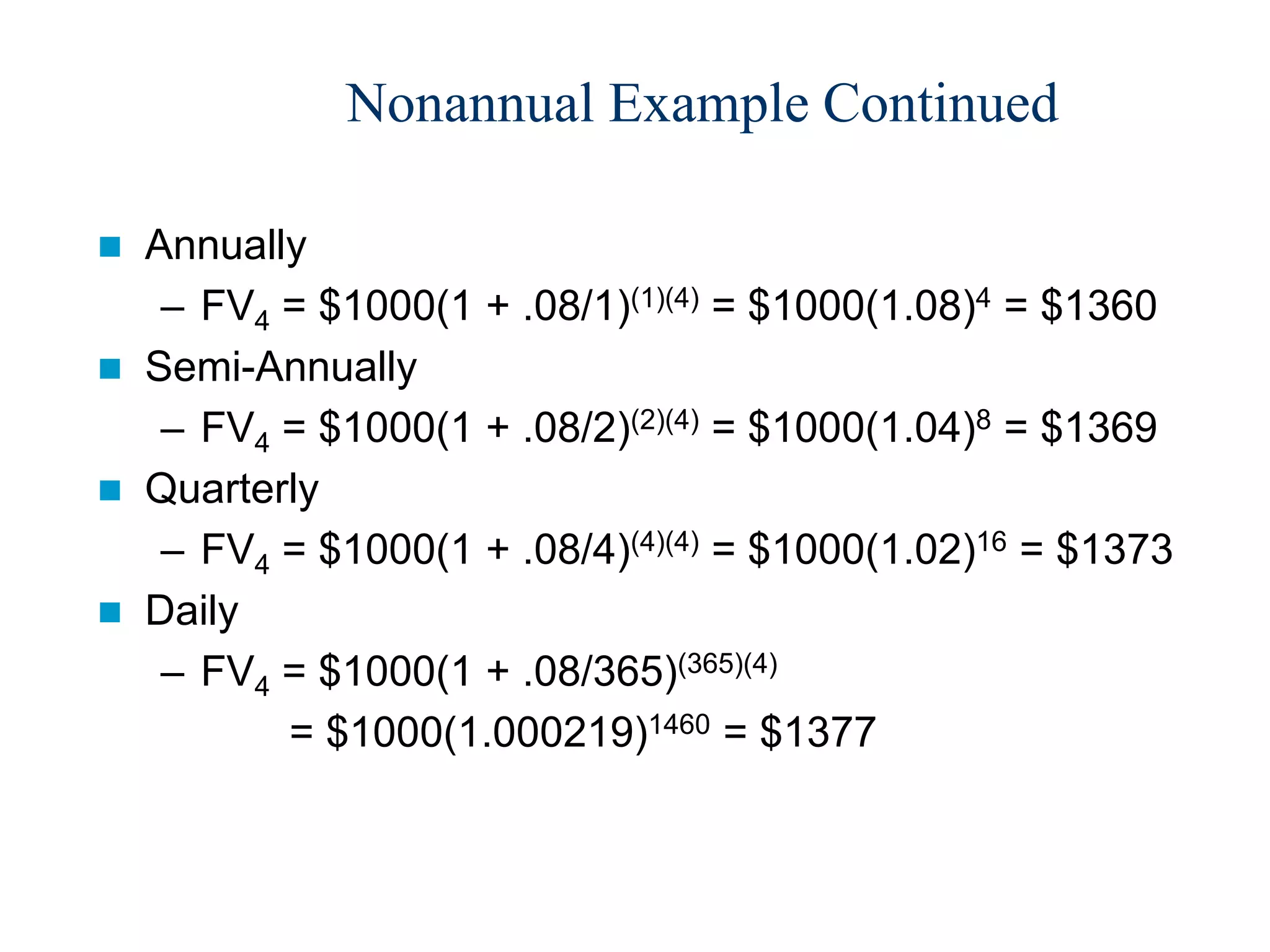This document discusses key concepts related to the time value of money, including:
- Calculating the future and present value of a single amount and an annuity using compound interest formulas.
- Examples of using financial calculators and spreadsheets to solve time value of money problems.
- Additional topics covered include annuities due, perpetuities, non-annual periods, and effective annual rates. Students are encouraged to use financial calculators to simplify solving discounted cash flow problems.

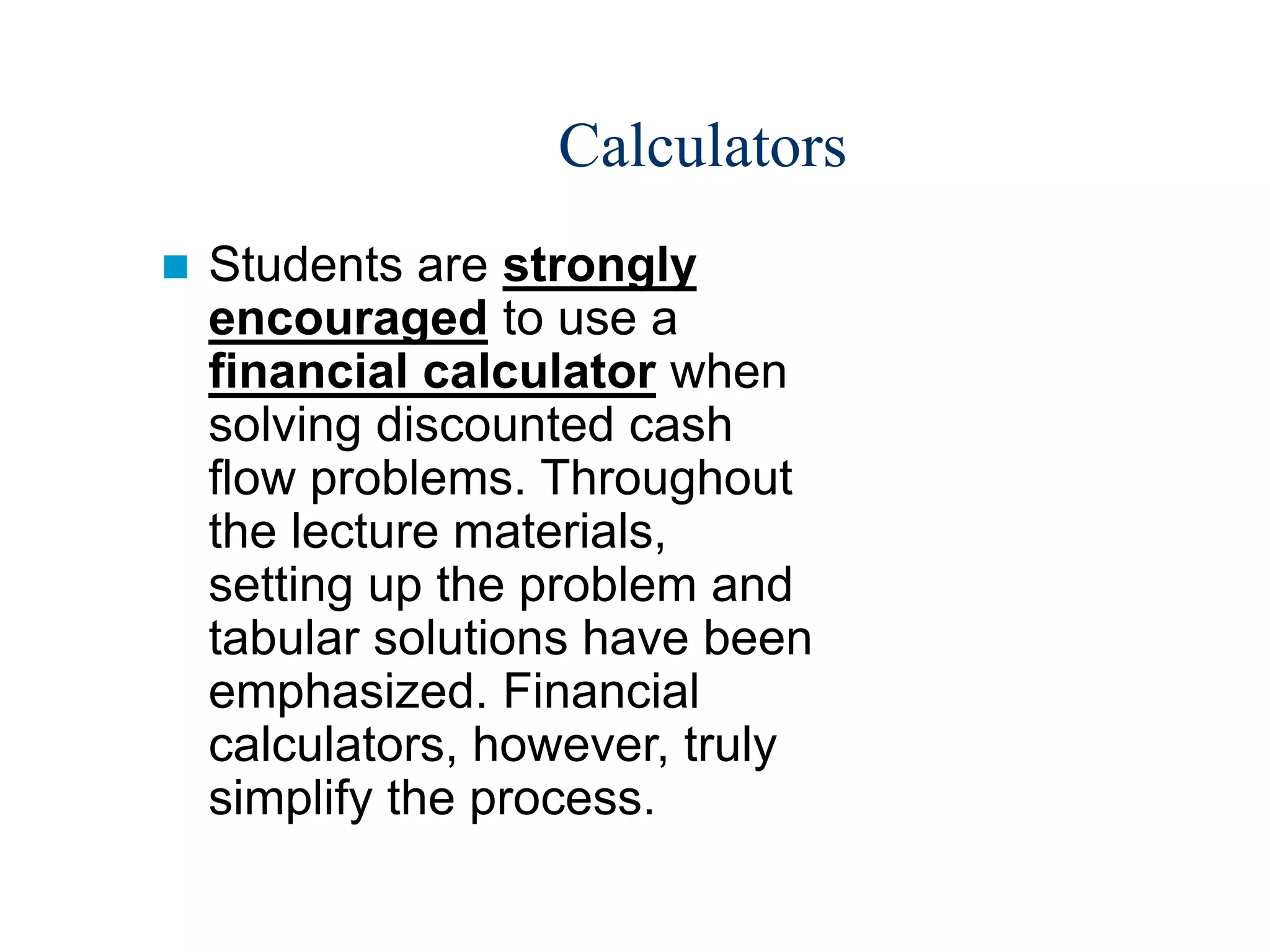





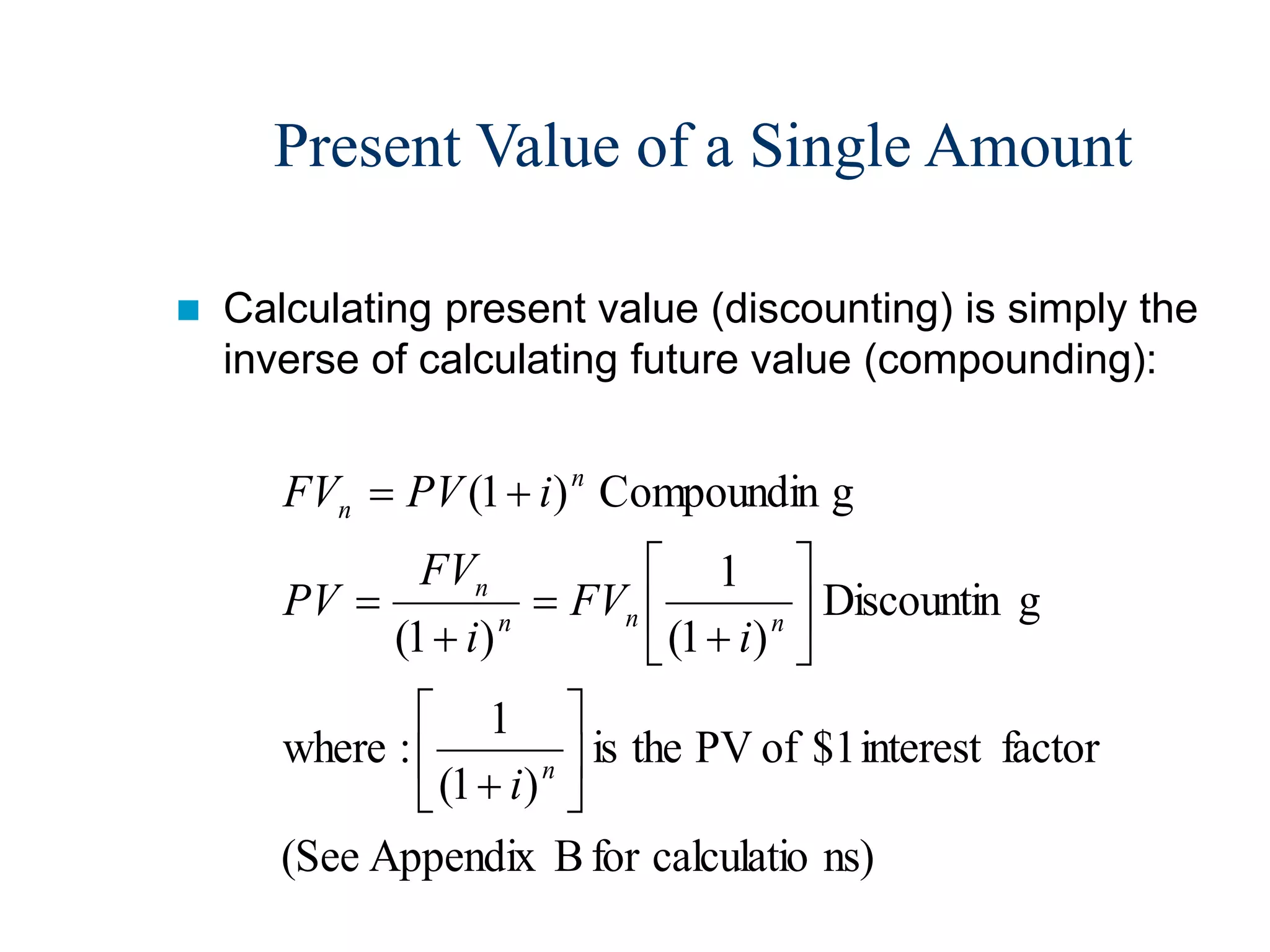





![FV3 = $100(1.08)2 + $100(1.08)1 +$100(1.08)0
= $100[(1.08)2 + (1.08)1 + (1.08)0]
= $100[Future value of an annuity of $1
factor for i = 8% and n = 3.]
(See Appendix C)
= $100(3.246)
= $324.60
FV of an annuity of $1 factor in general terms:
)
calculator
financial
-
non
a
using
when
(useful
i
1
i)
(1 n
](https://image.slidesharecdn.com/133chapter092002-230704042119-c9a6b1fe/75/133chapter092002-ppt-14-2048.jpg)


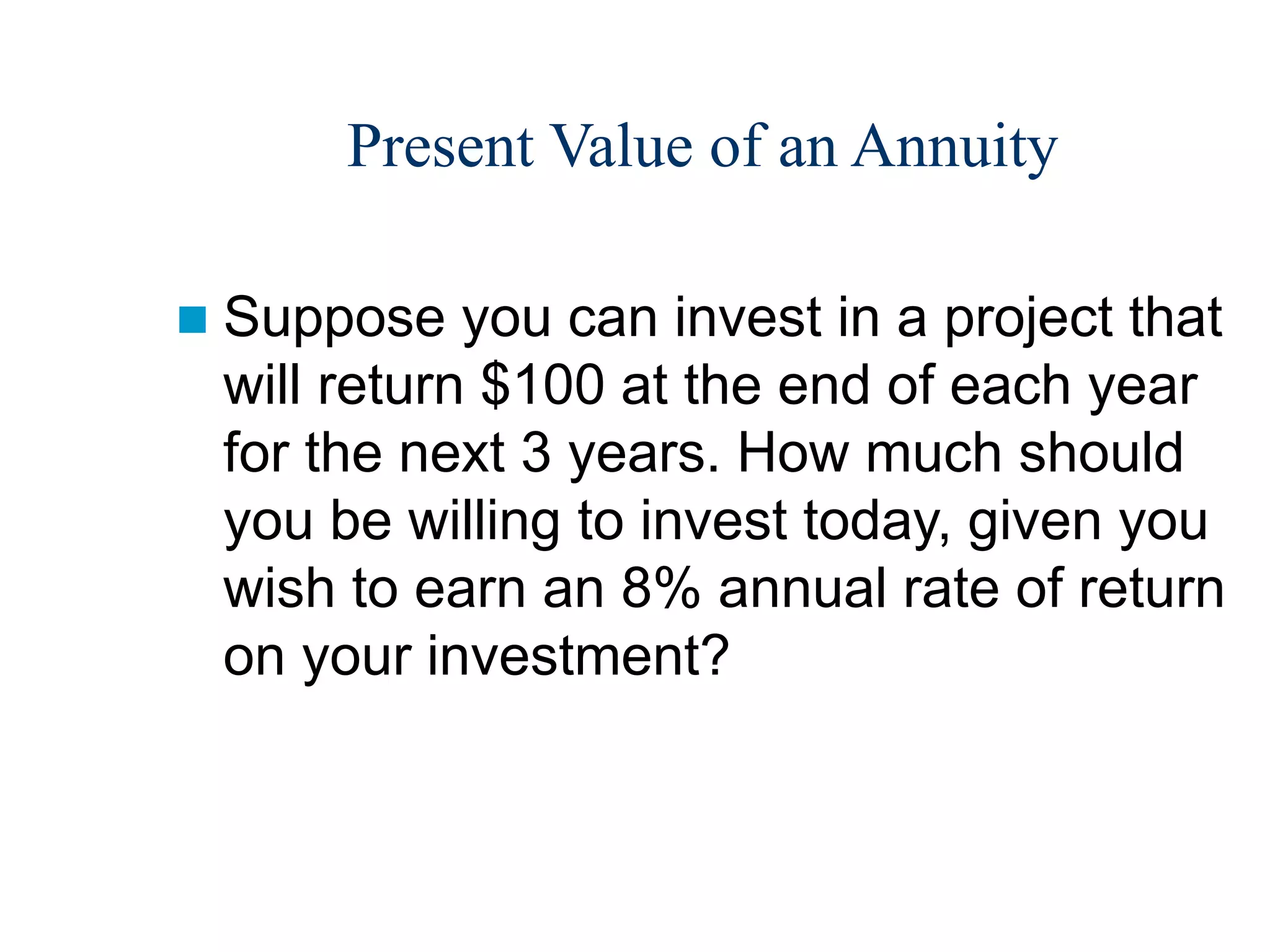
![T0 T1 T2 T3
$100 $100 $100
Discounted back 1 year:
$100[1/(1.08)1] = $92.59
Discounted back 2 years:
$100[1/(1.08)2] = $85.73
Discounted back 3 years:
$100[1/(1.08)3] = $79.38
PV of the Annuity = $257.70](https://image.slidesharecdn.com/133chapter092002-230704042119-c9a6b1fe/75/133chapter092002-ppt-18-2048.jpg)
![s)
calculator
financial
-
non
with
(useful
)
1
(
1
1
:
terms
general
in
factor
$1
of
annuity
an
of
PV
$257.70
)
$100(2.577
D.)
Appendix
(See
3]
n
and
8%
i
for
factor
$1
of
annuity
an
of
nt value
$100[Prese
=
]
)
08
.
1
/(
1
)
08
.
1
/(
1
)
08
.
1
/(
1
[
100
$
=
]
)
08
.
1
/(
1
[
100
$
]
)
08
.
1
/(
1
[
100
$
]
)
08
.
1
/(
1
[
100
$
3
2
1
3
2
1
i
i
PV
n
](https://image.slidesharecdn.com/133chapter092002-230704042119-c9a6b1fe/75/133chapter092002-ppt-19-2048.jpg)


